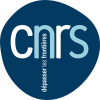PASTEK
The Mekong is one of south-east Asia's rivers most vulnerable to global change (flooding, low water ,drought). Half of the Mekong river discharge originates from a sub-catchment located in the mountainous areas of northern Lao PDR, corresponding to about a quarter of the Mekong river watershed's overall area. The Mekong vulnerability comes from the low water storage capacity of its tributary watersheds (shallow aquifers).These tributary watersheds are, therefore, very reactive to rainfall variations and land use changes.
The PASTEK project aims to study the impacts of global change on water quantity (discharge) and quality (sediment load, bacterial contamination) in one of its main tributaries, the Nam Khan river, which is one of the major tributaries of the Mekong river and drains a watershed of 7 200 km². The methodology relies on a two scale approach:
1- Characterization and simulation of the hydrology of a small scale catchment, Houay Pano, representative of the Nam Khan watershed (9 nested sub-catchments, from 0.1 to 10 km²) ;
2- Characterization of the Nam Khan hydrology and upscaling of small scale hydrological models developed in the first approach. The first step aims at understanding the links between land use, rainfall, and hydrological response (quantitatively and qualitatively) from the numerous available data collected between 2001 and 2009. The second step aims at (i) modelling the Nam Khan discharge as measured since 1960, (ii) calibrating the model and (iii) predicting the discharge during the period 2010-2050 for different climate and land use scenarii. This project relies on a large array of disciplines including, agronomy, sociology, ecology, climatology, hydrology, superficial geophysics and biogeochemistry.
|
|
| Nam Khan river catchment |
Methodology
To achieve the project's overarching goal of predicting the impacts of global change on the Nam Khan river's regime and water quality, the project has been structured around four main tasks with more specific objectives:
Task1 : Impact of land use on the small scale hydrological regime and water quality (catchments of Houay Pano and Houay Xon)
The objective is to predict the hydrological regime and water quality of the Pano stream on the basis of land use and climatic factors. The methods include land use, hydro-meteo, piezometric, geophysical monitoring as well as field experiments on runoff plots, natural isotopic natural tracing to separate the water origin (rain, surface, sub-surface and water-table).
 |
 |
Houay Pano Catchment
Task 2: Impact of land use changes and climate variability on the regional scale hydrological regime (Nam Khan watershed)
The objective is to relate the past hydrological regime of the Nam Khan river to land use changes and climate variations (period 1960-now). This operation is based on the hydro-meteo data base of the Mekong River Commission and of the local meteo station. It also requires ground surveys and the analysis of land use maps, aerial photos and satellite images. It is also important to verify the data quality through field measurements of flow along the Nam Khan River. One of the main objectives is to establish a longitudinal profile of the river and to determine the point sources of pollution and fecal contamination.
Task 3: Digital simulation of hydrological, biogeochemical and sediment yield of the Nam Khan watershed The main objective is to upscale the models developed in the Houay Pano catchment to the Nam Khan watershed. This operation relies on a multi-scale hydrological model based on flow distribution and using the Cast3M code developed at the CEA chained with the vegetation code ORCHIDEE. The main expected outputs are the prediction of the Nam Khan river flows in various points of the hydrographic network. These are to be used as input of the model SENEQUE/Riverstrahler to evaluate water quality (suspended load and bacteriological contamination).
Task 4: Prediction of the river regime for the period 2010-2050
The objective is to predict the possible variations of the river regime as influenced by predictable changes in land use and climate. This task will be based on the model chain Cast3M-ORCHIDEE-SENEQUE developed by Task 3 and on scenarii to be developed on land use changes and existing scenarii of climate change.
Erosion and changes in land use in northern Laos
Researches of the Bioemco team in Laos
Coordination
Christian VALENTIN (Bioemco)
Christian.Valentin @ ird.fr








